The Center for Holistic Wellness ®
Our focus is working with the client as opposed to working on the client. Our customized Holistic Health care is tailored to your wellness goals. The unique needs of each individual are addressed by focusing on the whole person, not simply the physical symptom of disease or discomfort.
Calming the Body and Mind,
Renewing the Spirit
We take a real interest in your health and well-being.
We believe in using Complimentary/Alternative Medical Therapies in an integrative approach is the most effective means of increasing, regaining, and maintaining your health and wellness. Many of us have experienced using traditional medicine for many health issues in a traditional clinical setting which sometimes leaves one feeling “unheard or truly cared for”.
We believe that receiving any treatment or service at The Center should be a relaxing experience as well as providing the results that you are looking for. By integrating the Holistic Wellness Approach into your daily lifestyle you are guaranteed to increase your quality of life and wellness.

The Center is a Holistic Wellness facility located in two locations: Maryland, and Dayton, Ohio. The Center was created as a result of a powerful passion from Jedidiah D. Smith, Clinical Holistic Health Practitioner (CHHP) who envisioned a relaxed, peaceful, and beautiful environment for people to receive quality, state certified Clinical Reflexology, Clinical Hypnotherapy, Massage Therapy, Traditional Naturopathy, Nutrition/Supplemental Assessments, and Anti-aging skin care products and supplements.
The Center is unmatched in providing the most up to date nutritional assessment technologies, frequency medicine technologies, therapeutic body modalities, wellness consulting, and results-oriented nutritional and skin care products in an eco-friendly, client-driven environment. Through our customized treatments including Clinical Reflexology, Clinical Hypnotherapy, Visual therapy, Therapeutic massage, Supplemental/Nutritional Assessments, Time Line Therapy and Wellness Consulting services, we are dedicated to providing you the opportunity to calm your body and mind, renew your spirit.
We are first and foremost your Wellness Center, our goal is to provide a balance against the stresses of daily life; to compliment the body’s natural healing ability by providing Alternative Complimentary Medical therapies.
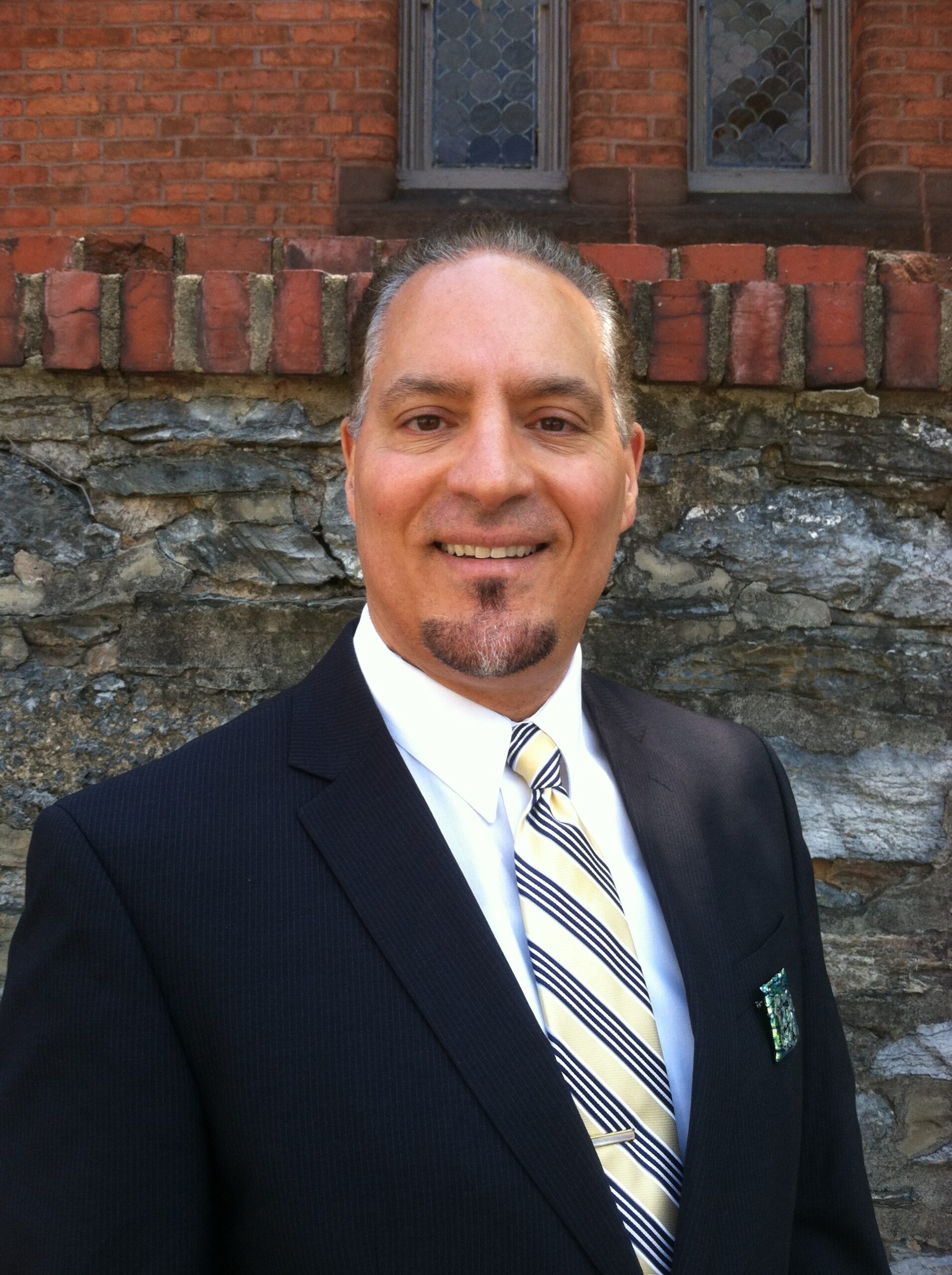
Co-Host
Roper Victim Assistance Academy of Maryland: Holistic, Healing tools for victims and therapists- 2015 – current.

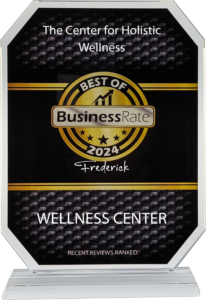
The Center for Holistic Wellness
Please note that all patients referred/clients are charged a one time set up fee of $25 for the Clinical Intake Forms
Clinical Intake Forms $25
1 hour session
Includes sanitizing foot bath
Reflexology performed on feet and hands
Relaxation period afterwards
Ohio: $130 hr MD: $130 hr
- Clinical Intake Forms $25
- Zyto Select Technology Assessment $595
- Secondary Appointment is Scheduled To Review
- Clinical Intake Forms $25
- History of client is taken
- Life & Goal Objectives Clarified
- A Working Protocol/System Is Agreed Upon
- OH: $155 hr MD: $155 hr
- $155 hr Consultation & Custom Blend
- Clinical Intake Forms $25
- History of client is taken
- First session of Hypnotherapy is performed
- 1 hour session (If more time is needed: prorated)
- Please note that Clinical Hypnotherapy can be conducted through phone conference
- OH: $155 hr. MD: $155 hr
- Clinical Intake Forms $25
- History of client is taken
- First Session of Time Line Therapy
- 1 1/2 hour session
- If more time is needed: prorated
- Please note that Time Line Therapy can be conducted through phone conference
- OH: $155 hr MD: $155 hr
To purchase the appropriate skin care protocol please go to: https://thecenterforholisticwellness.mynuskin.com
- Clinical Intake Forms $25
- Intake and energy healing 1.5 hours – $135
- Follow-up energy healing 1 hr – $ 110
- By Appt.
- Corporate Rates
- Group Rates
- Corporate Wellness Consultation/Programs
What the Research Shows:
- 34% Reduction in GLYPHOSATE
- 46% Reduction in Aluminum
- 24% Reduction in Cadmium
What TO EXPECT:
- We can’t avoid harmful exposures in our increasingly toxic world, but we don’t need to be at their mercy.
- Cadmium, lead, mercury, glyphosate, aluminum, arsenic, and other toxins through food, personal care products, and the environment can pollute our systems and expose us to a very long list of health complications and diseases.
Toxins and their Sources:
- Glyphosate (herbicide, food, water)
- Aluminum (soil, food, personal care products, cans, pans/foil, cosmetics, drugs)
- Cadmium (air, water, soil, batteries, plastics, cigarettes, coatings, pigments)
- Lead (soil, air, and water, cosmetics, jewelry, toys)
- Mercury (seafood, dental fillings, batteries, lightbulbs, thermometers, electrical items, disinfectants)
- Arsenic (food, air, water, soil, wood, pesticides)
- Uranium (plants, food, soil, water)
What is an Ion Cleanse
It’s a gentle, non-invasive, full-body detoxification therapy that improves microcirculation, efficiently aiding in the removal of toxins through the body’s excretory system. This gentle, relaxing footbath charged with ions, is a 20- 30 minute treatment, beneficial for even the most sensitive person. The Ion Cleanse machine removes toxins and impurities from the cells by creating a flow of positive and negative ions through the body. Ions, atoms with an electrical charge, attach themselves to toxins and are flushed out through the feet, and later through our sweat and urine. The detoxing continues for up to 48 hours after treatment. Try to avoid acidic foods and drink plenty of water during this time.
- An alkaline body is crucial to a person’s health. As diseases thrive, an acidic environment, making our bodies more alkaline creates a less hospitable environment for disease. The CDC has reported that most illnesses (up to 85%) are caused by pollutants and toxins in our bodies. An ionic detox can help facilitate alkalization through the process of ionization, removing “free radicals” and toxins from the body.
For a Healthier Lifestyle:
- Detoxify with the ION Cleanse.
- Replace toxic cleaners with clean ones when possible.
- Use clean, non-toxic personal care products.
- Eat healthy and organic, higher alkaline foods.
- Avoid processed foods.
- Wash food thoroughly.
- Have an exercise program where you break into a regular sweat.
- Get plenty of sleep.
Other scientifically measured effects of detox, besides alkalization, are lower blood sugar levels and lower cholesterol levels.
By removing many common toxins from our bodies, we can reduce the risk of physical, neurological, and metabolic disorders.
Check Out the following information!
Information
- Clinical Intake Forms $25
- Ion Detox Foot Bath $55
- 7 Sessions Purchase Discount: $355 (Reg. $385)
- 14 Sessions Purchase Discount: $700 (Reg. $770)
Acupuncture involves the insertion of very thin needles through your skin at strategic points on your body. A key component of traditional Chinese medicine, acupuncture is
most commonly used to treat pain. Increasingly, it is being used for overall wellness, including stress management. Traditional Chinese medicine explains acupuncture as a technique for balancing the flow of energy or life force — known as chi or qi (chee) — believed to flow through
pathways (meridians) in your body. By inserting needles into specific points along these meridians, acupuncture practitioners believe that your energy flow will re-balance. In contrast, many Western practitioners view the acupuncture points as places to stimulate nerves, muscles and connective tissue. Some believe that this stimulation boosts your body’s natural painkillers.
Why it’s done
Acupuncture is used mainly to relieve discomfort associated with a variety of diseases and conditions, including:
- Chemotherapy-induced and postoperative nausea and vomiting.
- Dental pain.
- Fibromyalgia.
- Headaches, including tension headaches and migraines.
- Labor pain.
- Lower back pain.
- Neck pain.
- Osteoarthritis.
- Menstrual cramps.
- Respiratory disorders, such as allergic rhinitis.
- Tennis elbow.
What you can expect
Acupuncture treatment
During an acupuncture treatment, your acupuncturist inserts very thin needles into
specific spots on your body. Insertion of the needles usually causes little discomfort.
Each person who performs acupuncture has a unique style, often blending aspects of
Eastern and Western approaches to medicine. To determine the type of acupuncture
treatment that will help you the most, your practitioner may ask you about your
symptoms, behaviors and lifestyle. He or she may also closely examine:
- The parts of your body that are painful.
- The shape, coating and color of your tongue.
- The color of your face.
- The strength, rhythm and quality of the pulse in your wrist.
An acupuncture session may take up to 60 minutes, although some appointments may
be much shorter. A common treatment plan for a single complaint would typically
involve one or two treatments a week. The number of treatments will depend on the
condition being treated and its severity. In general, it's common to receive 6 to 8
treatments.
During the procedure
Acupuncture points are situated in all areas of the body. Sometimes the appropriate
points are far removed from the area of your pain. Your acupuncture practitioner will tell
you the general site of the planned treatment and whether you need to remove any
clothing. A gown, towel or sheet will be provided. You lie on a padded table for the
treatment, which involves:
- Needle insertion. Acupuncture needles are inserted to various depths at strategic points on your body. The needles are very thin, so insertion usually causes little discomfort. People often don’t feel them inserted at all. A typical treatment uses 5 to 20 needles. You may feel a mild aching sensation when a needle reaches the correct depth.
- Needle manipulation. Your practitioner may gently move or twirl the
needles after placement or apply heat or mild electrical pulses to the
needles. - Needle removal. In most cases, the needles remain in place for 10 to 15 minutes while you lie still and relax. There is usually no discomfort when the needles are removed.
Anxiety And Depression
Acupuncture is a complementary treatment that can be added to a traditional treatment regimen for anxiety and depression. These conditions may occur alone or simultaneously. When patients have anxiety, they feel anxious and panicked.
With depression, they may be uninterested and apathetic. When the conditions occur together, patients may find themselves essentially flip-flopping, making it
immensely difficult to participate in daily life. Medications can help, but the side
effects can sometimes be too much for patients to handle.In some cases, medications, talk therapy, and other treatments are simply not
enough. In these specific cases, acupuncture might be able to fill in the gap and offer an alternative solution to patients looking to gain greater control over their symptoms. Many patients report some relief from their symptoms after their first session, but it may take several visits to recognize the full benefits. When acupuncture is helping, it is typically advised that patients have regular treatments at least once a week.
Insomnia
This condition may result from an array of medical or psychiatric conditions,
certain substances or medications, poor sleep habits or biological factors. This condition is characterized by the brain essentially not being able to stop being
awake. The sleep/wake cycle is interrupted. Not getting sufficient sleep can cause complications in all areas of a patient’s life. There are medications that are
beneficial, but the side effects may prevent patients from being able to use them.
Medications and physical therapy can help patients to retain their mobility.
However, acupuncture has also been shown to be an effective complement to
traditional therapies. A recent study performed by the National Institutes of Health concluded that acupuncture might improve mobility by approximately forty percent and reduce pain by forty-four percent. It helps patients to relax and may stimulate blood flow to arthritic areas to promote healing and to reduce the speed at which joint damage is progressing.
Sciatica
Sciatica is a condition that is characterized by pain associated with the sciatic
nerve and its location in the body. In most cases, only one side of the body
displays symptoms. The path the pain takes can start in the buttocks or lower
back and travel into the hips and then down the leg. A herniated spinal disc is the
most common cause because the disc can protrude and press on this nerve. In
addition to pain, numbness in the leg can also occur as a result of the compression and inflammation. The pain can be excruciating for some people, and traditional treatments might not help all patients. Acupuncture is quickly becoming a common treatment for this condition. It may aid this condition by releasing natural painkillers to make
the pain more tolerable. These natural painkillers include enkephalins and
endorphins. This complementary treatment may also help to deliver more blood to the affected area and relax the muscles that are located near this nerve.
Carpal Tunnel Syndrome
Carpal tunnel syndrome is very common, and it is most often seen in those who have hobbies or jobs that require repetitive wrist movements. For example, those who type for a living are commonly affected due to the repetitive motion
associated with typing. This condition occurs when a nerve in the wrist’s carpal tunnel region becomes compressed. This can result in varying degrees of tingling, numbness, pain, and weakness of the affected wrist. Surgery or steroid injections are generally recommended when this condition starts interfering with
the function of the affected wrist. While both can be beneficial, some patients might want to try less invasive
measures first, such as acupuncture. When acupuncture is used for this condition, it may be coupled with electric stimulation. This treatment has been
shown to improve nerve conduction in the compressed nerve. This resulted in reduced pain and other symptoms, according to a recent study. Receiving
acupuncture regularly may allow some patients to go longer without needing
invasive treatments.
Chronic Stress
When the pressures we face in our daily lives begin to add up, it is incredibly easy to feel overwhelmed, unhappy, and anxious about the little and big things.
Long-term stress can pose a significant risk to an individual’s health, as stress can cause organ damage, weaken the immune system, and also increase their risk of developing cancer. Chronic stress can also lead to frustration, low energy
levels, and moodiness, which can also lead to the development of anxiety and depression. Rather than taking antidepressants or other prescribed medications,
acupuncture offers effective stress relief that is natural without any side effects.
For one, many individuals have found acupuncture to be a soothing and relaxing treatment, especially when we feel exhausted and stressed due to work, exertion, or our personal lives. Acupuncture can help treat stress as it provides support and reenergizes the body, as this alternative treatment uses energy
points to increase one’s energy levels by inserting small, thin needles into specific points along the body.
One lab study published in the Journal of Endocrinology discovered that the participants who endured acupuncture following a stressful event had lowered
blood hormone levels secreted by the hypothalamus pituitary adrenal (HPA) axis, which controls our reactions to stress and regulates our immune system,
digestion, emotions, moods, and sexuality. The study also discovered the stress
response of “fight or flight” was also dramatically reduced when acupuncture was
performed as well. The authors further went on to explain that electronic
acupuncture blocks the chronic, stress-induced elevations of the HPA axis hormones and the NPY pathways, concluding that acupuncture is an effective form of treating chronic stress.
The Common Cold
At some point in our lives, we have all had a common cold and flu. Also known as respiratory viral infections, the common cold is an infection the infiltrates the upper respiratory tract and is the dominant cause of mortality throughout the world. The common cold is characterized by a runny nose, sneezing, coughing,
headache, fever, and nasal obstruction. So far, there have not been many studies done into the effectiveness of acupuncture with fighting off the common cold and
flu. However, with the few studies that have been done, research has indicated that patients receiving acupuncture have increased immune-enhancing hormones and blood counts for up to three days after the treatment, which can greatly help reduce cold and flu-like symptoms while combating the infection at the same time.
Acupuncture is reported to also help prevent future colds and flus by boosting a
patient’s immune system, helps them get over a cold or flu faster, reduces
symptoms such as fever, chills, and body aches, while also relieving a sore throat
and congestion. Acupuncture is also believed to have a detoxification effect on
the body through the amelioration of antioxidant defense systems, helping to not
only fight off a cold but prevent it from developing as well.
Asthma
Asthma can be a frustrating and challenging condition to keep control of. There
are numerous medications that can help relieve asthma symptoms, including inhalers and antihistamines, however, many patients worry about their long-term health and breathing when it comes to using these medications for an extensive period of time. As a result, acupuncture may be a helpful remedy! Acupuncture is an ancient treatment that believes that energy flows through the body, containing
both positive and negative forces. Conditions such as asthma are believed to be an imbalance of these forces, as energy flows through these specific paths, known as meridians. Specifically for asthma, needles are placed in the upper
back and hand to help open up the lungs to allow more air to flow throughout the body and to the lungs as well.
Unfortunately, there hasn’t been much research done to prove the effectiveness of acupuncture with treating asthma. Numerous studies have been done with
mixed or less satisfactory results, with some research suggesting that
acupuncture can help reduce a patient’s need for inhaled steroids, especially in children, but more research is necessary at finding how effective this type of treatment truly is.
Sinusitis And Rhinitis
Chronic sinusitis and allergic rhinitis are two common types of chronic nasal and sinus congestion that an individual can develop. Chronic sinusitis is when the lining of the sinus becomes inflamed that is either acute or chronic, and sinusitis is caused by nasal polyps, a deviated septum, respiratory tract infections like colds, or as a complication of another disease. Chronic sinusitis can also be caused by allergic rhinitis. Symptoms of this type are similar to allergic rhinitis and include headaches, yellow discharge, and ear pain or pressure.
Allergic rhinitis, commonly known as hay fever, is caused by environmental allergens or irritants, and this condition causes the nose to become blocked,
which then blocks the sinuses, causing sinusitis. By inhaling allergens, such as
grass, trees, dust, dander, mold, and more, the body’s immune system reacts to these allergens by releasing antibodies that attach to mast cells, releasing multiple chemicals. Symptoms of allergic rhinitis are nasal congestion, postnasal drainage, itching, sneezing, and itchy or watery eyes. Acupuncture treatment can
help treat both of these conditions by correcting the flow of energy in the body to target the underlying cause, relieving nasal symptoms and prevent them from
returning. Acupuncture has been shown to help open up the nose and airways, reducing congestion and relieving pain from sinus pressure.
Poor Eyesight & Eye Conditions
According to some studies, when the body is experiencing an imbalance, it can
become an eye problem or condition. When acupuncture is done, any imbalances within the body that are causing symptoms will be taken care of as it helps to restore the body’s energy, known as Qi. Eye acupuncture is mainly
focused on promoting adequate circulation of Qi and blood around the eyes, and acupuncture can be used as an alternative treatment for chronic dry eye syndrome. To further these claims, numerous studies have been conducted that have proven the effectiveness of acupuncture for treating poor eyesight and eye diseases. These studies have shown that acupuncture can reduce the temperature of the
afflicted eye’s surface, alleviating evaporation of the eye’s natural tears throughout the day, helping those with dry eye syndrome. Acupuncture is also used as an alternative remedy for glaucoma, as studies have proven that eye pressure caused by this condition significantly decreased after a session. Other
studies have shown that acupuncture successfully reduces symptoms of allergic and inflammatory eye disease, as well as macular degeneration and cataracts.
Chronic Pain And Inflammation
Regardless if your pain is in the back, neck, shoulder, elbow, knee, or muscle spasms, acupuncture has been proven to help relieve symptoms of chronic pain
and help soothe inflammation that affects the joints, muscles, and ligaments throughout the body. Typical treatments for chronic pain and inflammation are cold and hot compresses, anti-inflammatory medications, exercises, and physical
therapy. When these classic treatments fail to relieve symptoms, acupuncture is a fantastic option for treating this type of pain.
Research done by an international team of experts has proven that acupuncture does provide real relief from common forms of pain and inflammation. The experts did a total of twenty-nine studies, involving 18,000 participants to test the accuracy of acupuncture as alternative medicine, with some groups receiving real acupuncture, others having fake acupuncture or none at all. The overall results showed that acupuncture relieved pain by a whopping fifty percent, with the findings being published in the Archives of Internal Medicine. The theory is that acupuncture eases pain throughout the body by affecting and balancing
neurotransmitters, hormone levels, and the immune system.
Clinical Intake Forms: $25
First Acupuncture Session: $125
Subsequent Acupuncture Sessions: $100
MWOT is simply, breathing higher concentrations of oxygen while exercising. Your personal dual–inlet mask, is paired with our oxygen reservoir bag, offering a consistent supply of full, undiluted oxygen throughout your private 15–minute MWOT session. We use a low impact HIIT elliptical interval training program, which alternates short, high intensity bursts of speed with slow recovery phases. Anyone who is able to exercise, regardless of age or fitness level, can benefit.
Only 10-15 minutes, a few times a week, for a stronger, more capable body and mind.
Amazing Health Benefits
- Detoxify
- Sleep better
- Recover/heal faster
- Reduces Inflammation
- Enhances Cognitive Function
- Increase focus and productivity
- Increase metabolism/energy levels
- Enhance performance & endurance
- Oxygenates & Reinstates Blood Flow
- Improve immunity, health/well-being
Improved Sleep
Better brain function fosters better sleep. Research shows that high oxygen levels allow the brain to stay in a state of deeper and more restorative sleep.
Brain function and sleep hold a bidirectional connection in which, sleep-related issues may be the cause/and effect, of many brain problems. Getting a restful night’s sleep is essential for restoring both the body, brain, and its connection by relieving symptoms caused by poor sleep. Sleep apnea, lack of concentration, lapses in memory, emotional instability, anxiety/depression and intrusive thoughts are all symptoms that can be caused by poor sleep.
Inflammation
According to a Harvard Medical School report, “Chronic inflammation plays a central role in some of the most challenging diseases of our time, including rheumatoid arthritis, cancer, heart disease, diabetes, asthma, and even Alzheimer’s:’
In fifteen minutes of MWOT, your heart pumps the plasma-dissolved oxygen into the tiny pulmonary capillaries, and from there to the cells, arriving at the inflamed regions with poor blood flow. MWOT floods your body’s cells with plenty of oxygen, essential nutrients,and anti-inflammatory agents.
- Movement with oxygen therapy session – $95
- Clinical Intake/ Assessment Forms $25
- One time patented mask purchase – $150
Weight Loss
To lose weight, three simple rules need to be followed: Eat a well-balanced diet, exercise regularly, get proper rest. While the first two rules are obvious to everyone, few people pay attention to the third–sleep.
With sleep deprivation, the production of the growth hormone that helps control our bodies proportion of muscle to fat is reduced as well as the hormone leptin, which plays a large part in our ability to control how much we eat. Beginning our day fatigued also means, not only do we accomplish less, we don’t burn as many calories.
In addition to helping our bodies sleep better and more efficiently, Movement with Oxygen Therapy accelerates metabolism, which gives us the energy to carry out vital functions such as breathing, blood circulation, cell growth and repair, digestion, and hormonal balance. This enables us to receive more oxygen, which in turn offers more energy, allowing us to exert more effort, and increasing calorie consumption by 30%.
Aging
The ability of the body to transport oxygen to the cells deteriorates with age, making us more prone to disease. When exercising with oxygen, more oxygen enters the bloodstream and tissues, aiding in cellular repair and regeneration. It also restores arterial pressure and cerebral blood flow to youthful levels, helping protect the brain and heart.
Visit our website for more information about
- Movement with Oxygen Therapy
- Rehabilitating/strength building
- Managing a respiratory condition
- Improving cardiovascular health
- Fitness training (all levels)
- Fighting @hronic fatigue/depression
- Promoting weight loss
- In reasing flexibility
- Regulating hormones
- Improving immune
Burning Fat ls Easier With Oxygen Therapy
Movement with oxygen therapy, allows you to inhale 4x times more oxygen while you move. Integrating mcygen into your workout, enables 0ur heart to effectively deliver 01 gen to the healthy cells, improving energy levels, endurance, a d mental performance.
Super-oxygenating your body increases fat metabolism by improving the cell’s enzymatic activity, making fat-burning an easier process.
Breathe Well
For breath is life, so if you breathe well you will live long on earth.
Healthy Breathing Benefits Our:
- Respiratory System
- Cardiovascular System
- Nervous System
- Immune System
- Digestive System
- Urinary System
- Lymphatic System
- Musculoskeletal System
Other Benefits:
- Psychological
- Interpersonal
- Emotional
- Spiritual
- Movement with oxygen therapy session – $95
- Clinical Intake/ Assessment Forms $25
- One time patented mask purchase – $150
- 10 Sessions – 10% Discount
More About Our Wellness Services
Not everyone is versed on what we do here, so please feel free to get an in-depth look on how we speak to mind, spirit, and body.
Traditional Naturopathy
Traditional Naturopathy recognizes that conventional medicine has value for individuals who are injured, suffering from trauma, suffering from congenital or genetic disorders, and otherwise need a highly-trained individual who can intercede to help them survive and recover.


Clinical Reflexology
Reflexology is a science that correlates metabolic systems, glands, organs, and areas throughout the body to reflex points on the feet, hands, body and ears. By applying various specific pressure techniques to these reflex points the reflexologist can have an affect on the corresponding body part. The affect that reflexology has on the targeted part of the body is increased circulation, a reduction of stress, balanced para sympathetic to sympathetic response along with other benefits that promotie healing throughout the body.- kidney function
- lowers high blood pressure
- reduced stress levels
- increased circulation in the limbs
- increased energy
- increased digestive performance
- balances hormone production
- helps detoxify the body on a cellular level
- balances mind and body
- improves overall health
- Diabetes
- Digestion
- Prostate Enlargement
- Liver Function
- Headaches and Migraines
- Contraindications from Cancer Treatments
- Detoxification
- Kidney Function
- High Blood Pressure
- Stress Reduction
- Circulation Issues
- Hormone Production
- Pregnancy
- Infertility Issues
- Auto Immune Function
- Lymphatic
- Learning Disabilities
- Sleep Apnea
- Obsessive Compulsive Disorder
- Pain and Inflammation
- Painful Feet
Supplemental Assessment

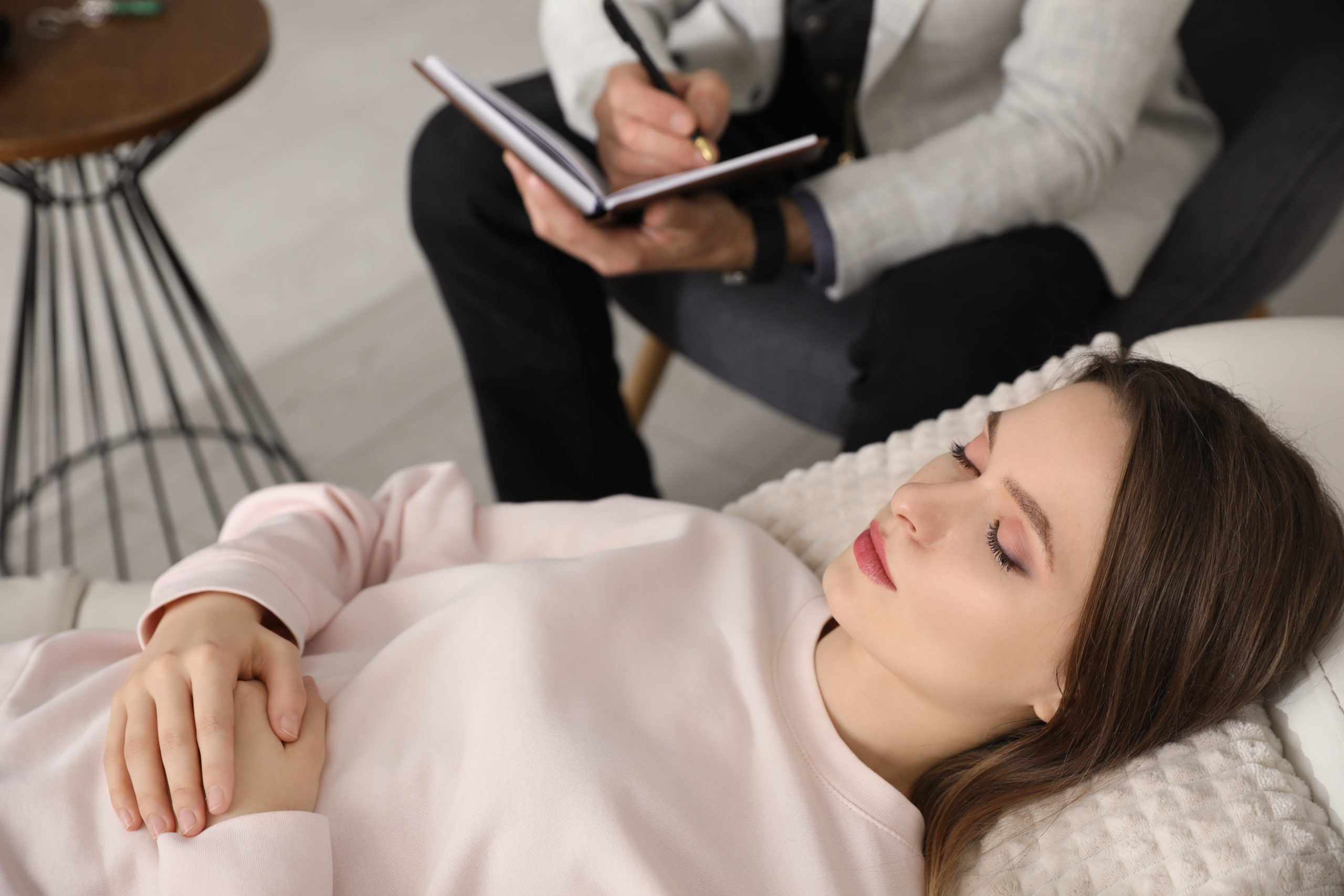
Clinical Hypnotherapy
Clinical Hypnotherapy is a procedure during which a qualified health professional or therapist guides a patient in a state of deep relaxation. In this relaxed state, the patient is aware of everything that is going on, but at the same time, becomes increasingly absorbed in using his or her imagination as directed by the hypnotherapist.
- ADDICTIONS/COMPULSIONS
- ALCOHOL
- ANXIETY
- CHRONIC PAIN
- COMPULSIONS
- DEPRESSION
- DRUG DEPENDENCY
- EATING DISORDERS
- FEAR OF PUBLIC SPEAKING
- GOAL SETTING
- HABITS
- HYPOCHONDRIASIS
- NAIL BITING
- OVER-EATING
- PANIC ATTACKS
- PHOBIAS
- POST-TRAUMATIC STRESS
- PREPARATION FOR CHILD BIRTH
- PREPARATION FOR SURGERY
- PREPARATION FOR TEST TAKING
- PROCRASTINATION/TIME MANAGEMENT/ORGANIZATION
- SELF EXPLORATION
- SLEEP
- SMOKING CESSATION
- SPORTS PERFORMANCE
- WEIGHT MANAGEMENT
Time Line Therapy
The therapeutic process called Time Line Therapy is a methodology in which a series of techniques are used to bring about changes on an unconscious level and alter behavior. The intention of this therapy is to help individuals refrain from being reactive to present situations based on past experiences. Time Line Therapy is a reprogramming process that releases the effects of negative experiences and helps a person let go of past influences.

- Promotes living in the present
- Reduces fears
- Manages anger tendencies
- Releases negative emotions based on stored memories
- Anxiety
- Apathy
- Chronic illness
- Depression
- Fears and Phobias
- Grief
- Indifference / Stagnation
- Procrastination
- Sadness
- Trauma / Post Traumatic Stress Syndrome
- 350 B.C. – Aristotle is credited for first mentioning “stream of time” in his book Physics IV
- 1890 – American philosopher and psychologist, William James, spoke of “linear memory.”
- Late 1970’s – NLP Developers, Richard Bandler and John Grinde began combining the theory how memories are stored with hypnotherapy.
- 1985 – Time Line Therapy created by Tad James, M.S., Ph.D.
- 1988 – Time Line Therapy book written by Tad James and Wyatt Woodsmall was published. Title: Time Line Therapy and the Basis of Personality
- Hypnotherapy and NLP
- Neuro-linguistic Programming
- Hypnotherapy

Sports Hypnosis
For many years now the Olympic teams and Pro athletes have been using the tool of hypnosis to gain the mental edge on their opponents. Tiger Woods for golf, Wayne Gretzky for hockey and now amateur athletes are using hypnotherapy for the mental aspect of the game. It has been said competition at any competitive level is 80% mental and hypnosis is the key to mental success.
- Beijing 2008 Olympics: The only 2 shooters who won Gold Medals for the U.S. worked with a hypnotist
- Beijing 2008: A hypnotist cured Australian Gold Medalist, Steve Hooker, of his fear in pole vaulting
- Tiger Woods began seeing Jay Brunza at the age of 13 for hypnosis and mental training. Phil Mickelson was trained by mental coach and hypnotist Dean Reinmuth
- In 1984, Time magazine reported that Mary Lou Retton used hypnosis to prepare for the L.A. Olympics and to block pain in her injured foot to win the Gold Medal.
- 1983: The Chicago White Sox hired a full-time hypnotist and made the playoffs.
- Phil Jackson has used and still uses mediation and hypnosis for all his championship basketball teams with the Bulls and Lakers. He’s been frequently called a “Zen Master.”
- 1976: Rod Carew had a nagging injury that threatened his career. Through hypnosis, he turned the lingering pain into a .400 batting average.
- In baseball: Nolan Ryan, George Brett, Maury Wills, Don Sutton, Mark McGwire reported using sports hypnosis to be able to relax for his baseball games.
- Ken Norton used hypnosis to defeat Muhammed Ali (and broke his jaw) in the 1973 fight where Ken was a 7-1 underdog. Ali began using hypnosis soon after.
- Jimmy Connors used Sports Hypnosis for his U.S. Open Tennis wins.
- In 1967, a dentist, Dr. Raymond Abrezol, guided the Swiss ski team to 3 out of 4 members earning medals using hypnotic techniques.
- Ingmar Johannson used Sports Hypnosis training before wresting the heavyweight boxing title from Floyd Patterson in 1959.
- In 1956, Eleven hypnotists accompanied the Soviet athletic team to the Olympics in Melbourne.
- Greg Louganis, Wayne Gretzky, Steve Stone, Boomer Esiason, Freeman McNeil, Talmadge Griffiths and numerous NFL, MLB, NHL, Boxing, Olympic and Pro Athletes all use hypnosis today for that edge.
Reiki
Reiki, like prayer, belongs to all traditions and no tradition. The word “Reiki” was coined by Mikao Usui in the early 1900s, but the healing energy has been available to us long before, wherever pain and human suffering existed.
Usui’s gift in passing down the ability of channeling Reiki to others, gave this process the structure while allowing it to expand through the world, after he was gone. This is a beautiful example of God showing up how and when He is needed in ways that we can understand and explain.
The combining of Reiki and essential oils is a powerfully enhancing and profound healing experience. Aroma- Reiki promotes the release of emotions, accelerates wound healing and produces a feeling of mental clarity and calmness.
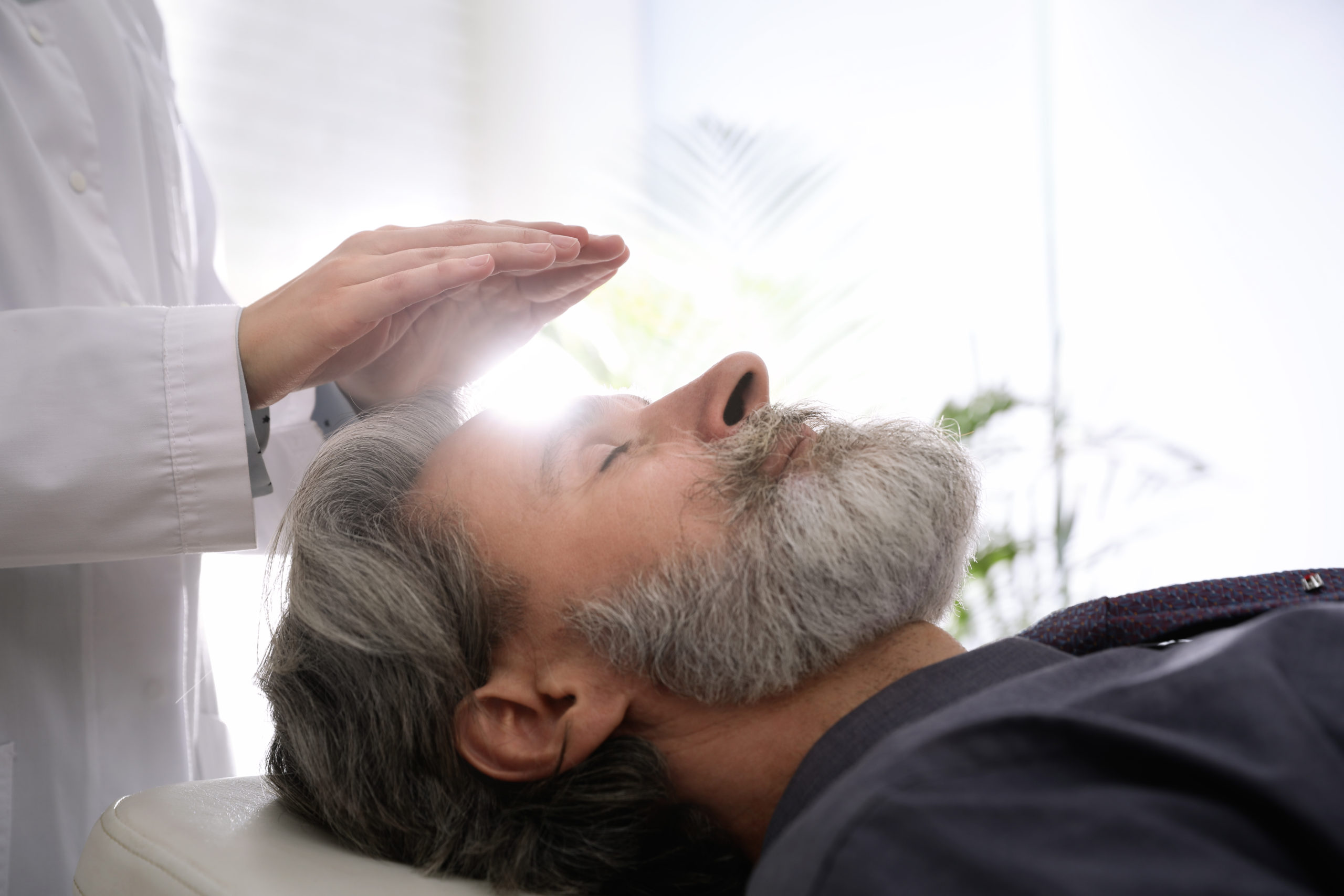

Past Life Regression Therapy
- Troubling behavior and attitude patterns that have persisted over time, despite attempts to change
- Relationship dynamics that seem to have a life of their own (intense attraction/aversion to another person, deep-seated issues that defy resolution)
- Phobias – intense fears, such as fear of heights or fear of water, that seem unconnected to an experience in the current life
- Some chronic physical ailments, sensations and pains
- Dominant attitudes or emotions that seem to persist throughout your life
- Accessing strengths and accomplishments to increase confidence and effectiveness
- Re-experiencing a happy, successful lifetime to bring balance and peace when undergoing difficult times
- Clarifying life purpose and direction
- Exploring prior lifetimes shared with current loved ones, adding reassurance that we are never parted from those we love
- Aiding wisdom, guidance and peace, available from our “interlife”
Continued Educational Presentations
- Roper Victim Assistance Academy of Maryland: 2015 – Currently The Science of Wellness Holistic Healing Tools for Victims and Therapist
- Featured Keynote Speaker at the 4th Annual Symposium for The National Children’s Hospital, Washington DC – 2020
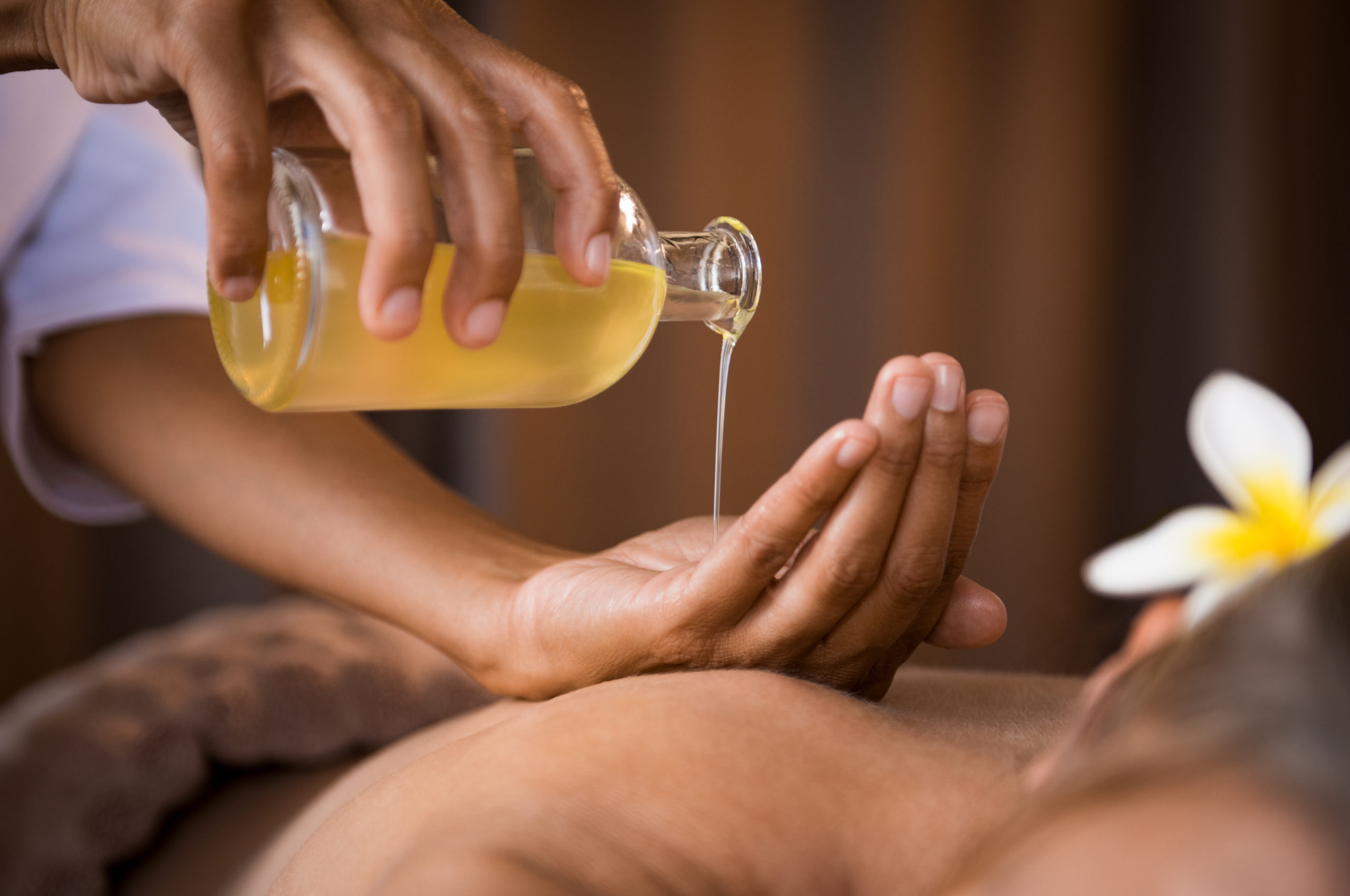
More About Our Wellness Services
Not everyone is versed on what we do here, so please feel free to get an in-depth look on how we speak to mind, spirit, and body.
- kidney function
- lowers high blood pressure
- reduced stress levels
- increased circulation in the limbs
- increased energy
- increased digestive performance
- balances hormone production
- helps detoxify the body on a cellular level
- balances mind and body
- improves overall health
- Diabetes
- Digestion
- Prostate Enlargement
- Liver Function
- Headaches and Migraines
- Contraindications from Cancer Treatments
- Detoxification
- Kidney Function
- High Blood Pressure
- Stress Reduction
- Circulation Issues
- Hormone Production
- Pregnancy
- Infertility Issues
- Auto Immune Function
- Lymphatic
- Learning Disabilities
- Sleep Apnea
- Obsessive Compulsive Disorder
- Pain and Inflammation
- Painful Feet
Video
- ADDICTIONS/COMPULSIONS
- ALCOHOL
- ANXIETY
- CHRONIC PAIN
- COMPULSIONS
- DEPRESSION
- DRUG DEPENDENCY
- EATING DISORDERS
- FEAR OF PUBLIC SPEAKING
- GOAL SETTING
- HABITS
- HYPOCHONDRIASIS
- NAIL BITING
- OVER-EATING
- PANIC ATTACKS
- PHOBIAS
- POST-TRAUMATIC STRESS
- PREPARATION FOR CHILD BIRTH
- PREPARATION FOR SURGERY
- PREPARATION FOR TEST TAKING
- PROCRASTINATION/TIME MANAGEMENT/ORGANIZATION
- SELF EXPLORATION
- SLEEP
- SMOKING CESSATION
- SPORTS PERFORMANCE
- WEIGHT MANAGEMENT
- Promotes living in the present
- Reduces fears
- Manages anger tendencies
- Releases negative emotions based on stored memories
- Anxiety
- Apathy
- Chronic illness
- Depression
- Fears and Phobias
- Grief
- Indifference / Stagnation
- Procrastination
- Sadness
- Trauma / Post Traumatic Stress Syndrome
- 350 B.C. – Aristotle is credited for first mentioning “stream of time” in his book Physics IV
- 1890 – American philosopher and psychologist, William James, spoke of “linear memory.”
- Late 1970’s – NLP Developers, Richard Bandler and John Grinde began combining the theory how memories are stored with hypnotherapy.
- 1985 – Time Line Therapy created by Tad James, M.S., Ph.D.
- 1988 – Time Line Therapy book written by Tad James and Wyatt Woodsmall was published. Title: Time Line Therapy and the Basis of Personality
- Hypnotherapy and NLP
- Neuro-linguistic Programming
- Hypnotherapy
- Beijing 2008 Olympics: The only 2 shooters who won Gold Medals for the U.S. worked with a hypnotist
- Beijing 2008: A hypnotist cured Australian Gold Medalist, Steve Hooker, of his fear in pole vaulting
- Tiger Woods began seeing Jay Brunza at the age of 13 for hypnosis and mental training. Phil Mickelson was trained by mental coach and hypnotist Dean Reinmuth
- In 1984, Time magazine reported that Mary Lou Retton used hypnosis to prepare for the L.A. Olympics and to block pain in her injured foot to win the Gold Medal.
- 1983: The Chicago White Sox hired a full-time hypnotist and made the playoffs.
- Phil Jackson has used and still uses mediation and hypnosis for all his championship basketball teams with the Bulls and Lakers. He’s been frequently called a “Zen Master.”
- 1976: Rod Carew had a nagging injury that threatened his career. Through hypnosis, he turned the lingering pain into a .400 batting average.
- In baseball: Nolan Ryan, George Brett, Maury Wills, Don Sutton, Mark McGwire reported using sports hypnosis to be able to relax for his baseball games.
- Ken Norton used hypnosis to defeat Muhammed Ali (and broke his jaw) in the 1973 fight where Ken was a 7-1 underdog. Ali began using hypnosis soon after.
- Jimmy Connors used Sports Hypnosis for his U.S. Open Tennis wins.
- In 1967, a dentist, Dr. Raymond Abrezol, guided the Swiss ski team to 3 out of 4 members earning medals using hypnotic techniques.
- Ingmar Johannson used Sports Hypnosis training before wresting the heavyweight boxing title from Floyd Patterson in 1959.
- In 1956, Eleven hypnotists accompanied the Soviet athletic team to the Olympics in Melbourne.
- Greg Louganis, Wayne Gretzky, Steve Stone, Boomer Esiason, Freeman McNeil, Talmadge Griffiths and numerous NFL, MLB, NHL, Boxing, Olympic and Pro Athletes all use hypnosis today for that edge.
- Troubling behavior and attitude patterns that have persisted over time, despite attempts to change
- Relationship dynamics that seem to have a life of their own (intense attraction/aversion to another person, deep-seated issues that defy resolution)
- Phobias – intense fears, such as fear of heights or fear of water, that seem unconnected to an experience in the current life
- Some chronic physical ailments, sensations and pains
- Dominant attitudes or emotions that seem to persist throughout your life
- Accessing strengths and accomplishments to increase confidence and effectiveness
- Re-experiencing a happy, successful lifetime to bring balance and peace when undergoing difficult times
- Clarifying life purpose and direction
- Exploring prior lifetimes shared with current loved ones, adding reassurance that we are never parted from those we love
- Aiding wisdom, guidance and peace, available from our “interlife”
- Roper Victim Assistance Academy of Maryland: 2015 – Currently The Science of Wellness Holistic Healing Tools for Victims and Therapist
- Featured Keynote Speaker at the 4th Annual Symposium for The National Children’s Hospital, Washington DC – 2020

The Center for Holistic Wellness Testimonials




